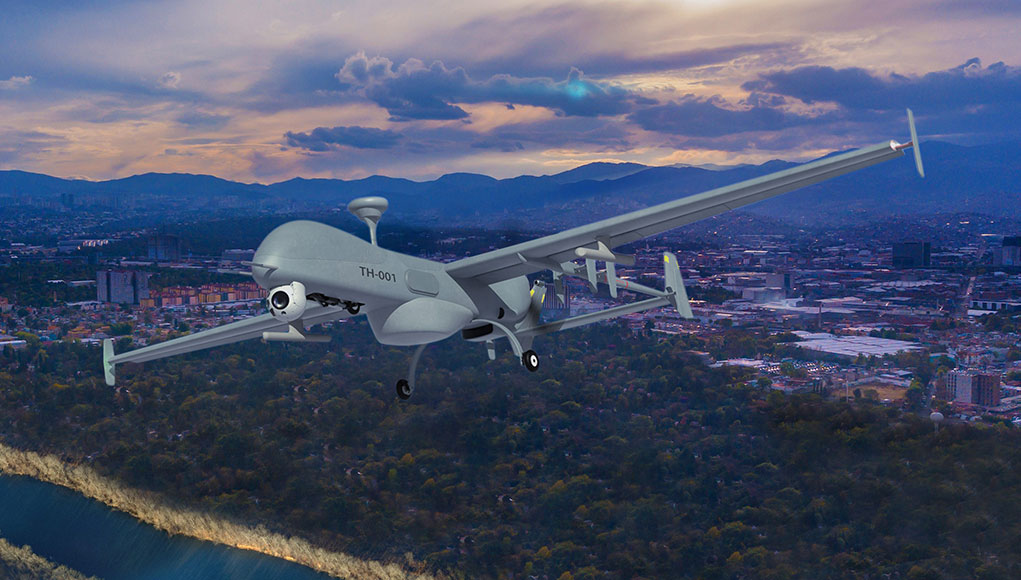IAI is introducing a new member of the Heron family of Unmanned Aerial Systems, designed for tactical operations. The Tactical Heron or T-Heron is positioned as the successor for the company’s Searcher tactical UAS, the second generation remotely piloted vehicle introduced in the early 1990s. The T-Heron joins the Heron family that currently includes Heron I, Super Heron, Heron TP-XP and Heron TP. T-Heron brings the advanced capabilities that evolved with this family to the tactical level, assisting contingency operations in remote areas. Flight testing of the new UAS is expected to begin in 2019 and continue through the next year.
Designed for tactical missions on the battlefield, the T-Heron is slated for operation by land forces and coastal security organizations. Like the larger Heron family members, T-Heron can carry and operate multiple payloads simultaneously, enabling the drone’s operation in the day, night and limited visibility conditions. Configured with a large, rectangular fuselage and low center of gravity enables the T-Heron to deploy from forward, unpaved runways with minimum preparations, and with different payload configurations. The drone and its support systems are transported in two standard containers and can operate from unpaved surfaces with minimal logistical support. The T-Heron utilizes the ground support equipment common to all Heron family UAS and is self-supported with integral power and cooling, and brakes, thus requiring no special equipment (such as cable arresting gear and power cart).
On tactical deployment, the system can minimize the support crew, utilizing the Heron family ‘Long Runner’ remote operation feature, forward-deployed T-Heron can be controlled remotely from a control center, performing all functions, including takeoff, landing, and taxi without relying on local support teams. IAI offers customers a full logistics package, providing flight line, intermediate and depot level (D level) maintenance and support, ensuring complete
independence.
Powered by a single Rotax aviation certified engine T-Heron can climb to a ceiling of 24,000 feet, fly at a maximum speed of 120 knots and carry a useful payload of up to 180 kg, including the M-19HD, IAI’s most powerful EO/OIR payload designed specifically for standoff operation. The aircraft has a gross takeoff weight of 600 kg.
Uses FAR33 aviation certified Rotax 912iSC engine, provisions for deicing systems and redundant safety-critical systems The new drone complies with UAV systems airworthiness requirements defining by STANAG 4671. To enable sharing the airspace with civilian aircraft, T-Heron also carries IFF/TCAS for identification and collision avoidance. Similar to other family members, T-Heron has an integral ‘pilot window,’ using a tail-mounted panoramic camera.
| Heron UAS Family Members | ||
|---|---|---|
| Model | MTOW (kg) | Payload (kg) |
| Searcher MkIII | 450 | 120/td> |
| T-Heron | 600 | 180 |
| Heron I | 1,150 | 250 |
| Heron II | 1,350 | 470 |
| Super Heron | 1,450 | 450 |
| Heron TP-XP | 5,400 | 450 |
| Heron TP | 5,400 | 1,000 |

















